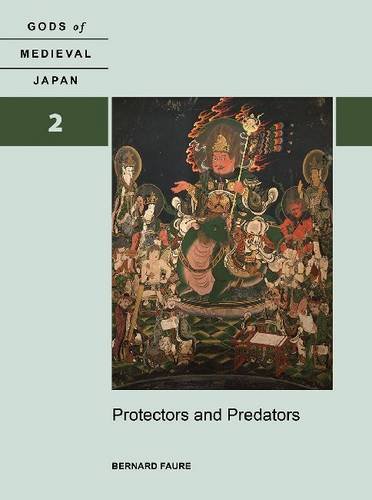

Most ebook files are in PDF format, so you can easily read them using various software such as Foxit Reader or directly on the Google Chrome browser.
Some ebook files are released by publishers in other formats such as .awz, .mobi, .epub, .fb2, etc. You may need to install specific software to read these formats on mobile/PC, such as Calibre.
Please read the tutorial at this link: https://ebookbell.com/faq
We offer FREE conversion to the popular formats you request; however, this may take some time. Therefore, right after payment, please email us, and we will try to provide the service as quickly as possible.
For some exceptional file formats or broken links (if any), please refrain from opening any disputes. Instead, email us first, and we will try to assist within a maximum of 6 hours.
EbookBell Team

4.1
90 reviewsWritten by one of the leading scholars of Japanese religion, Protectors and Predators is the second installment of a multivolume project that promises to be a milestone in our understanding of the mythico-ritual system of esoteric Buddhism―specifically the nature and roles of deities in the religious world of medieval Japan and beyond. Bernard Faure introduces readers to medieval Japanese religiosity and shows the centrality of the gods in religious discourse and ritual. Throughout he engages theoretical insights drawn from structuralism, post-structuralism, and Actor-Network Theory to retrieve the “implicit pantheon” (as opposed to the “explicit orthodox pantheon”) of esoteric Japanese Buddhism (Mikkyō). His work is particularly significant given its focus on the deities’ multiple and shifting representations, overlappings, and modes of actions rather than on individual characters and functions.
In Protectors and Predators Faure argues that the “wild” gods of Japan were at the center of the medieval religious landscape and came together in complex webs of association not divisible into the categories of “Buddhist,” “indigenous,” or “Shinto.” Furthermore, among the most important medieval gods, certain ones had roots in Hinduism, others in Daoism and Yin-Yang thought. He displays vast knowledge of his subject and presents his research―much of it in largely unstudied material―with theoretical sophistication. His arguments and analyses assume the centrality of the iconographic record as a complement to the textual record, and so he has brought together a rich and rare collection of more than 170 color and black-and-white images. This emphasis on iconography and the ways in which it complements, supplements, or deconstructs textual orthodoxy is critical to a fuller comprehension of a set of medieval Japanese beliefs and practices and offers a corrective to the traditional division of the field into religious studies, which typically ignores the images, and art history, which oftentimes overlooks their ritual and religious meaning.
Protectors and Predators and its companion volumes should persuade readers that the gods constituted a central part of medieval Japanese religion and that the latter cannot be reduced to a simplistic confrontation, parallelism, or complementarity between some monolithic teachings known as “Buddhism” and “Shinto.” Once these reductionist labels and categories are discarded, a new and fascinating religious landscape begins to unfold.